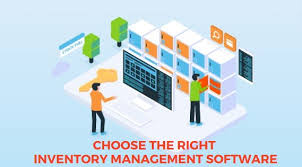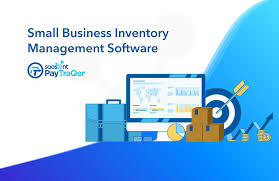Introduction
In today’s fast-paced and competitive business environment, efficient inventory management is more critical than ever. Businesses across industries need robust solutions to track stock levels, reduce wastage, streamline operations, and enhance customer satisfaction. This is where business inventory management software comes into play.
Inventory management software has evolved from simple spreadsheets to powerful, cloud-based platforms capable of integrating with various systems such as point-of-sale (POS), accounting, e-commerce, and supply chain management. This article provides an in-depth look into business inventory management software, including its features, benefits, selection tips, and the future of inventory technology.
1. What Is Business Inventory Management Software?
Business inventory management software is a digital tool that helps organizations track, manage, and organize inventory data. From raw materials to finished products, this software ensures that stock levels are maintained optimally and that inventory records are accurate and up to date.
Key Functions Include:
- Monitoring stock levels in real time
- Automating inventory reordering
- Managing multiple warehouse locations
- Tracking shipments and deliveries
- Providing detailed reporting and analytics
Whether it’s a small retail store or a large manufacturing plant, inventory management software is essential for keeping supply chains efficient and responsive.
2. Core Features of Inventory Management Software
2.1 Real-Time Inventory Tracking Real-time tracking provides instant updates on stock movement, ensuring you always know what is in stock, what needs reordering, and what is on its way.
2.2 Barcode Scanning and RFID Barcode and RFID integration allows quick scanning of items to update stock levels, reducing human error and speeding up the inventory process.
2.3 Multi-Location Management For businesses operating in more than one location, this feature enables centralized control of inventory across warehouses or retail outlets.
2.4 Order Management Automates order creation, fulfillment, and reordering processes, helping businesses meet demand without overstocking.
2.5 Reporting and Analytics Advanced reporting tools provide insights into inventory turnover, product performance, and purchasing trends.
2.6 Integration Capabilities Seamlessly connects with accounting software, e-commerce platforms, POS systems, and ERP solutions.
2.7 Mobile Access Many platforms offer mobile apps, allowing users to manage inventory on the go.
3. Benefits of Using Inventory Management Software
3.1 Enhanced Accuracy Reduces human error by automating calculations and record-keeping.
3.2 Cost Savings Minimizes overstocking and understocking, reducing storage costs and lost sales.
3.3 Improved Customer Satisfaction Ensures products are available when customers need them, enhancing the overall shopping experience.
3.4 Better Forecasting Historical data and analytics help predict future demand more accurately.
3.5 Time Efficiency Automates routine tasks, freeing up staff to focus on more strategic activities.

4. Choosing the Right Inventory Management Software
4.1 Define Your Needs Consider your industry, business size, and specific challenges. For instance, a restaurant has different inventory needs than a tech wholesaler.
4.2 Budget and Cost Software costs vary from free open-source tools to premium solutions with extensive features. Factor in both upfront and ongoing expenses.
4.3 Ease of Use User-friendly interfaces reduce training time and encourage adoption by your team.
4.4 Scalability Choose a solution that can grow with your business, supporting increased inventory and users.
4.5 Customer Support Check for reliable customer service, tutorials, and online resources.
4.6 Reviews and Recommendations Read user reviews and ask for referrals to gauge software performance in real-world settings.
5. Popular Business Inventory Management Software Options
5.1 Zoho Inventory Ideal for small to medium-sized businesses, offering multi-channel selling, order management, and real-time tracking.
5.2 TradeGecko (QuickBooks Commerce) Combines inventory management with accounting features and is great for wholesalers and e-commerce businesses.
5.3 NetSuite ERP A robust solution for large enterprises with complex inventory needs, offering automation, analytics, and global scalability.
5.4 Cin7 Integrated with POS, accounting, and 3PLs, ideal for retail and e-commerce operations.
5.5 Fishbowl Inventory Popular among manufacturers for its advanced features in production and inventory control.
6. Implementation Best Practices
6.1 Plan Ahead Map out workflows, assign responsibilities, and set clear objectives.
6.2 Data Migration Ensure clean, organized data before importing to avoid inaccuracies.
6.3 Training Invest in comprehensive training for all users to maximize ROI.
6.4 Test the System Run pilot programs to identify and fix issues before full deployment.
6.5 Monitor and Improve Regularly evaluate software performance and seek user feedback to make necessary adjustments.
7. The Future of Inventory Management Software
7.1 Artificial Intelligence and Machine Learning AI-driven demand forecasting, predictive analytics, and intelligent automation are transforming inventory management.
7.2 Internet of Things (IoT) Smart shelves, sensors, and connected devices provide real-time stock updates and minimize manual intervention.
7.3 Blockchain Enhances transparency and traceability in the supply chain, reducing fraud and errors.
7.4 Augmented Reality (AR) Used in warehouse operations for more efficient picking and placement.
7.5 Cloud Computing Cloud-based solutions offer scalability, security, and remote access, making them ideal for modern businesses.
Conclusion
Business inventory management software is no longer a luxury but a necessity for companies aiming to stay competitive and agile. Whether you run a small retail shop or a large distribution center, the right inventory management system can streamline operations, reduce costs, and enhance customer satisfaction. By understanding your needs and exploring the various software options available, you can implement a solution that supports long-term success in an ever-evolving marketplace.
